Each color of fruit and vegetable has strange nutrient benefits essential to our health. We all require to eat fruits to keep our bodies fit, healthy, and strong. Fruits are one of the awesome things to get essential minerals, nutrients, and other essential quantities to our body from natural sources. Many red fruits and vegetables are full of powerful, healthy antioxidants that may fight heart disease and cancer.
Here is the list of red fruits and vegetables.
List Of 25 Fruit and vegetable
- Red apples
- Beetroot
- Cherry
- Pomegranate
- Red dragon fruit
- Tomato
- Sweet potato
- Watermelon
- Red grapefruit
- Strawberry
- Radish
- Radicchio
- Cranberry
- Blood orange
- Raspberry
- Prickly pear
- Red chili
- Red grape
- Red pepper
- Fig
- Plum
- Red pear
- Lingonberry
- Rhubarb
- Red onion
1.Red apples
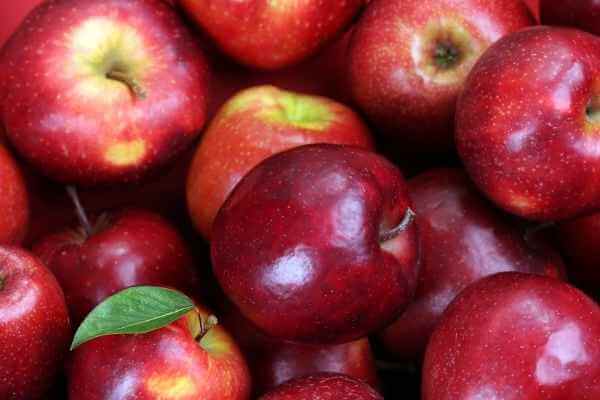
Red apples are the most common red fruits in a temperate climate and offer multiple health benefits. They are high in antioxidants and fiber. They may help lower the risk of chronic conditions such as heart disease, diabetes, and cancer. Apples may also improve gut and brain health and promote weight loss.
2.Beetroot
Beetroot is a root vegetable known as the table beet, just beet, garden beet, and red beet. They are loaded with vital nutrients; beetroot is an excellent source of FolateFolate, potassium, manganese, fiber, vitamin C, and iron. Beetroot has been associated with many health benefits, including lower blood pressure, improved blood flow, and increased exercise performance.
3.Cherry
Cherry is the most loved fruit, and for a good reason. They are not only tasty but also loaded with minerals, vitamins, and plants compound with powerful health effects. Cherries are full of fiber, vitamin C, and antioxidants. They may benefit heart health, improve symptoms of gout and arthritis, improve sleep quality and relieve muscle pain, inflammation, and damage.
4.Pomegranate
Pomegranates are large, round, red fruit filled with seeds. Pomegranates are low in fat and calories but high in vitamins, fiber, and minerals. It may help keep inflammation away, have anti-cancer properties, heart health benefits, and support urinary and antimicrobial properties.
5.Red dragon fruit
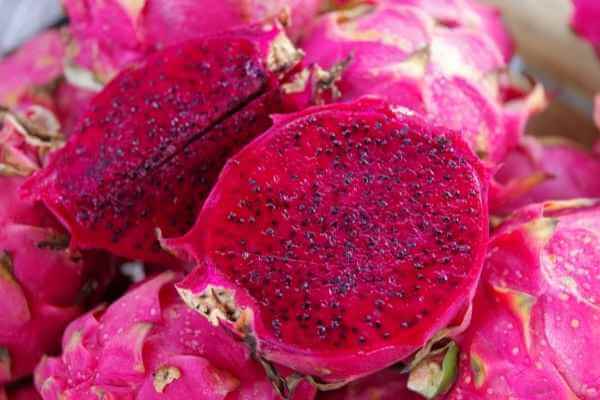
Red dragon fruit is an uncommon tropical fruit. The fruits come in yellow-skinned and red varieties. It is packed with protein, carbohydrates, sugars, calories, calcium, vitamin A, vitamin C, iron, and magnesium. It’s naturally high in fiber and fat-free. It may help lower your blood sugar, strengthen your immune system, aid digestion, and reduce bad cholesterol.
6.Tomato
Tomato is native to South America from the nightshade family. Its commonly eaten and prepared like a vegetable. Tomato is an excellent source of antioxidants, which has many health benefits, such as reducing the risk of cancer and heart disease. They are also loaded with FolateFolate, vitamin C, potassium, and vitamin K.
7.Sweet potato
Sweet potatoes are naturally sweet roots belong the morning glory family. There is hundreds of kind of sweet potatoes. Some have cream and white flesh, and others have yellow, red, and purple. They are packed with beta carotene, potassium, and vitamin C. They help keep your immune system, eye health, and body in defense against germs. It is also suitable for your organs like your kidney and heart.
8.Watermelon
Watermelon is large green-colored fruit with sweet and juicy red flesh. Watermelon is recognized for its vast size, round to oval shape, and dark green stripes with light green skin. Watermelon is rich in vitamin C, vitamin A, and vitamin B6. It may improve heart health, reduce inflammation and oxidative stress, relieve muscle soreness, prevent muscular degeneration, and aid skin health.
9.Red grapefruit
Grapefruit is grown in Clusters on trees and is part of the citrus family. Grapefruit provides many protective and beneficial nutrients and antioxidants properties. It is packed with vitamin A, flavonoids, potassium, and fiber. It may support heart health, help with weight loss, aid blood sugar management and promote better brain function.
10.Strawberry
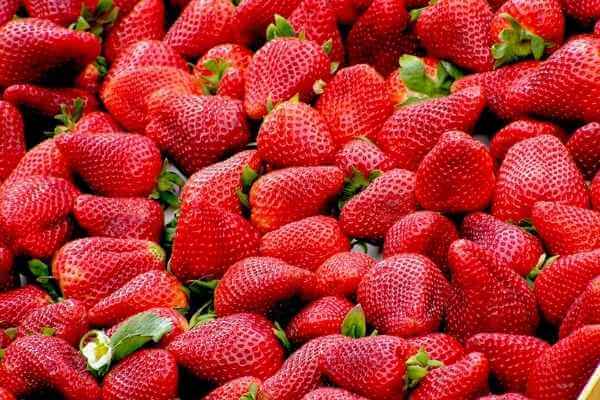
Strawberries are sweet, juicy, and bright red fruit. They are a good source of manganese and vitamin C and contain a decent amount of potassium and FolateFolate. Strawberries are high in plant compounds and antioxidants, which may benefit blood sugar control, reduce inflammation, and improve vascular functions and heart health.
11.Radish
Radishes are a part of root vegetables with variable skin color, light-colored, crunchy flesh, and an almost peppery and spicy taste. They are high in minerals and antioxidants such as potassium and calcium. These nutrients help reduce your risk of heart disease and lower high blood pressure. Radish is a source of natural nitrates that improves blood flow.
12.Radicchio
Radicchio is a leafy vegetable with white veins and dark reddish-purple leaves. It is sometimes called Italian chicory, red chicory, and red endive. It is high in vitamin K, an excellent dietary fiber and antioxidants source. These nutrients help keep the body healthy and may help lower the risk of health conditions including diabetes, heart disease, cancer, and osteoporosis.
13.Cranberry
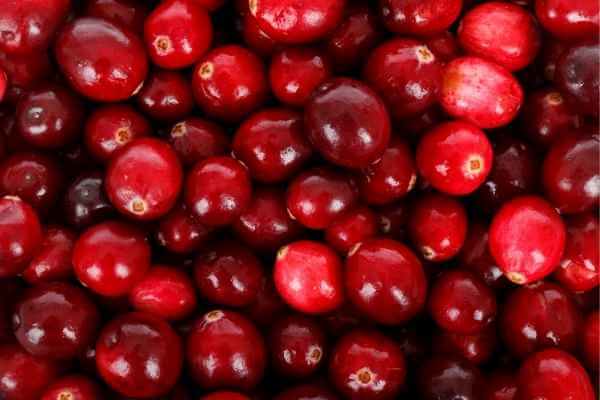
Cranberries are related to the bilberries, lingonberries, and blueberries and are members of the heather family. Cranberries contain 90% water. They contain minerals and vitamins, including vitamin E, vitamin K, vitamin C, and manganese. They may prevent cavities, maintain digestive health, reduce inflammation, improve heart health and prevent cancer.
14.Blood orange
Blood oranges are high in antioxidants, and an excellent source of manganese, potassium, vitamin C, vitamin A, dietary fiber, and anthocyanins. They may help lower oxidation stress and reduce the risk of chronic health problems like heart disease, cancer, and diabetes.
15.Raspberry
Raspberries are sweet, small fruit with a tart undertone. Raspberries are found in four different colors purple, red, black, and gold. They are packed with potassium, fiber, vitamin C, vitamin B, manganese, potassium, and omega-3 fatty acid. They can help prevent heart health and stroke, help regulate blood sugar, and are suitable for healthy bones and skin. Discover the reason why raspberries are red.
16.Prickly pear
Prickly pear is the cactus plant fruit, also known as opuntia. The fruit is juicy and sweet, like watermelon. They are an excellent source of fiber and contain many minerals and vitamins. They contain magnesium, calcium, and potassium, which support healthy blood pressure. Vitamin C is helpful for immune system health.
17.Red chili
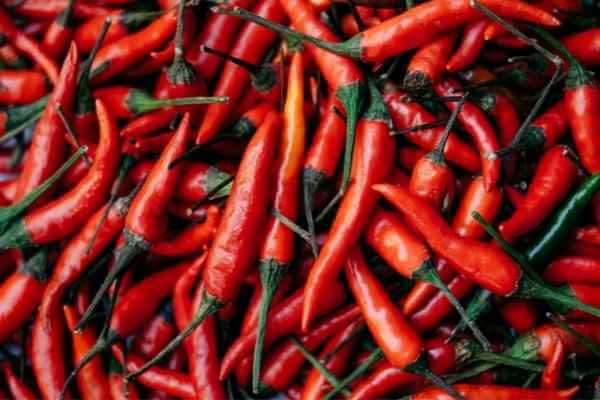
Red chili pepper spices things up and fights inflammation. You may feel the burn, but red chili may help reduce pain. Red chilies are loaded with vitamin C, which helps boost the immune system and reduce chronic disease. They also contain antioxidants that help clear blockages in blood arteries and vessels.
18.Red grape
Red grapes, which give us raisins, red vines, and jelly, have many health benefits. They are packed with antioxidants, flavonoids, polyphenols, vitamin C, and vitamin K. They may help reduce inflammation, relax blood vessels, lower cholesterol levels, improve your health, reduce the risk of diabetes and help the cardiovascular system.
19.Red pepper
Red pepper is also called red bell pepper, bell pepper, sweet pepper, and capsicum. It contains iron, vitamin C, vitamin B6, and Folate. The beta-carotene and vitamin A in red pepper provide good support for your eye and overall vision health. Vitamin A is also helpful in healings wound, supporting skin cells, and boosting white blood cell growth.
20.Fig

Figs are an excellent source of both potassium and calcium. They may help improve bone density, prevents conditions like osteoporosis, improve bone health, support healthy blood pressure, improve digestion and reduce bone turnover.
21.Plum
A plum is a fruit with a dusty-white waxy coating and belongs to the same family as nectarines, apricots, and peaches. Plums are high in phosphorus, calcium, potassium, magnesium, vitamin K, vitamin A, vitamin C, and Folate. It may help lower inflammation, keep anxiety away, control blood pressure, improve bone health and regulate your blood sugar levels.
22.Red pear
Red pears are delicious and bell-shaped fruits loved since ancient times. Red pears contain carbs, protein, vitamin C, vitamin K, fiber, copper, and potassium. They also provide decent amounts of provitamin A, Folate, and niacin. They may promote gut health, offer anti-cancer effects, boost heart health, lower the risk of diabetes and help your weight loss.
23.Lingonberry
Lingonberries are tiny, red berries that taste like cranberries but are not quite as tart. They are high in antioxidants and plant compounds. They may promote healthy gut bacteria, protect eye health, promote healthy blood sugar levels, help weight control, support heart health and reduce the cancer risk.
24.Rhubarb
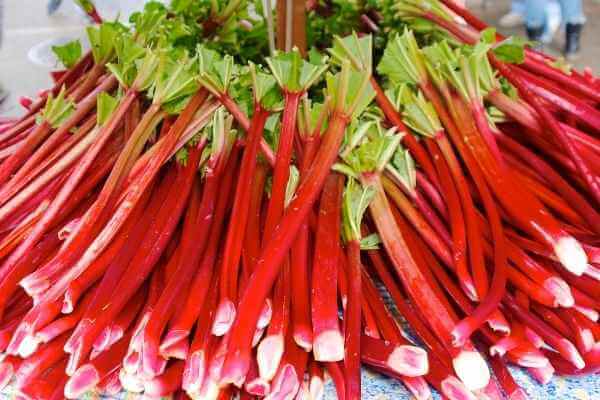
Rhubarb is a vegetable that many people use as a fruit in recipes and cooking. It is rich in antioxidants, proanthocyanidins, and anthocyanins. These antioxidants have anti-inflammatory, anti-bacterial, and anti-cancer properties, which help defend you from many health-related issues like cancer, heart disease, and diabetes.
25.Red onion
Red onions are best for caramelizing, jus, reduction, chutney, and marmalades, but they are best eaten raw. Red onions are high in anthocyanins, vitamin C, and vitamin K. They may control diabetes, bring down high cholesterol, are suitable for heart health, and boost your immune system.

